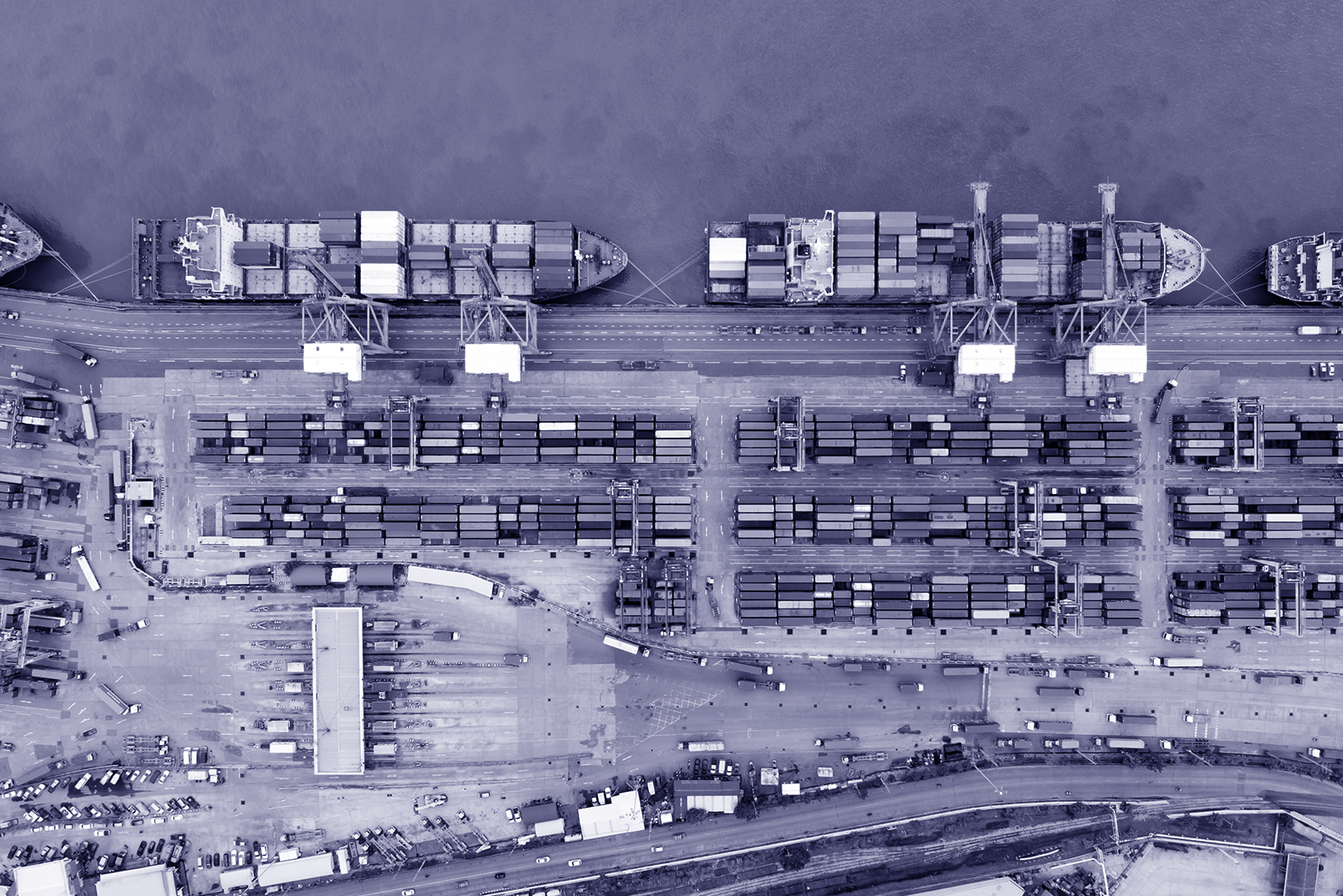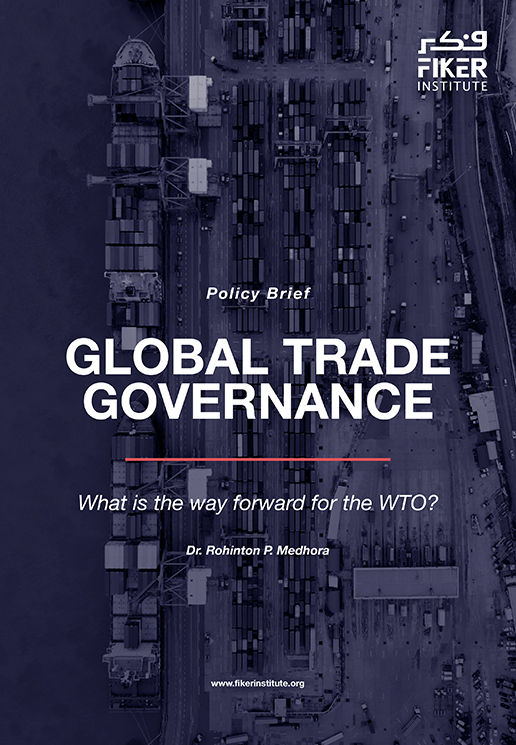
Global Trade Governance
To state that the governance of multilateral trade, centered at the World Trade Organization (WTO), is at a crossroads is to understate the obvious. While current geoeconomics play a large role, as exemplified by US President Trump’s tariff policies, the causes are varied and of longer standing than simply current events. An increasingly complex trade and ‘add the topic of your choice’ agenda that attempts to tackle behind-the-border matters, the changing nature of what constitutes trade, coupled with WTO processes themselves and an international mood that has turned inhospitable to cooperation, have led to the current impasse. Without a discernible path forward, international trade is witnessing a regression from a system based on ‘most favored nation’ to its antithesis, one driven by impulsive bilateral negotiations and reciprocal tariffs. This might be seen as an existential threat to the trade system the world has known and nurtured, often grudgingly, for the past seventy years.
FROM THE GATT TO THE WTO
Following the 1944 Bretton Woods Conference, the International Monetary Fund (IMF) and World Bank were established as treaty-based institutions. However, the third proposed body, the International Trade Organization (ITO), never materialized due to US congressional opposition. Instead, the General Agreement on Tariffs and Trade (GATT) was launched in 1948 with 23 members, aiming to reduce trade barriers. Early GATT rounds concentrated on lowering tariffs. The sixth round of negotiations, known as the Kennedy Round, conducted in Geneva from 1964-67, was the culmination of this era, with tariffs on most industrial products reduced by an average of 35%, and on the more contentious agricultural and food products by about 15%. Writing in 1971 John W. Evans, the Assistant Special Representative for Trade in the Executive Office of the United States (US) President, warned that “developments of the 1960s raise sober doubts as to the permanence of GATT […] The Kennedy Round may emerge in the perspective of history as the twilight of the GATT.”1 In light of the contemporary state of global trade governance, Evans’ warning proved to be prescient.
By the Tokyo Round (1973–79), negotiations began targeting non-tariff barriers, which were more complex and controversial, especially as GATT membership expanded to over 100 countries. The Uruguay Round (1986–94) struggled to meet its goals but led to the creation of the WTO in 1995. Unlike the GATT, the WTO provided a formal dispute resolution system and a broader governance mandate, including trade in services and intellectual property. In 2001, the WTO launched the Doha Round which was never officially closed. These negotiations came to be known as the Doha Development Round due to their focus on developing countries. Over the past three decades, there have been some achievements, including an updated agreement on government procurement, first discussed in the Tokyo Round and concluded in 2014, and an agreement on trade facilitation which entered into force in 2017.
What the limited successes of the past decades underlines is that trade norms rather than tariff reduction are at the center of trade governance through the WTO. As John W. Evans warned in 1971, the very successes of reducing tariffs and broadening its mandate is resulting in the impasse of the current international trade governance architecture. The ‘single undertaking approach’, in which nothing is agreed until all issues have been agreed upon, has not helped, so today the multilateral trade agenda advances via regional and plurilateral initiatives. This is not necessarily a bad thing – both regional and plurilateral approaches might be seen as seedbeds for experimentation and innovation, to be scaled up and out if successful – but even these initiatives have shown fissures on account of the changing contours of geopolitics and geoeconomics.
The rise of China continues to be contested on grounds of its actual or perceived unfair behavior, despite – or perhaps because of – its entry into the WTO in 2001. The renewed conflict in Ukraine since 2022 has reinvigorated a discourse, which had been on the back burner during the heyday of globalization, about the extent to which economic alliances should be based on political and normative compatibility among members. For example, Russian banks are prevented from using the SWIFT international payments resolution system, Russia’s central bank assets held in European Union countries and the US are frozen, and calls have been made to expel it from international organizations like the IMF and WTO – all associations considered global public goods with relatively non-political criteria for participation.
Moreover, digital technology governance and climate governance agendas pose challenges to the nature of international trade and the precepts that might govern it. We live in a world moving away from the basic principles that underpinned the WTO, and GATT before it, to what one participant at a recent conference of the WTO Chairs Program termed “transactional agreements, not trade agreements.”
ACCOMMODATING DIVERSITY
Global trade governance today is struggling in an increasingly fragmented and competitive international system. During the negotiations to create the GATT, however, structural differences embedded in varied economic policy and development models were deemed manageable. For example, developing countries’ aspirations were accommodated via the principle of Special and Differential Treatment which gives developing countries special advantages in international trade. Additionally, mindful of the already emerging differences between Western democracies, the Socialist bloc and developing countries, Article XX provided gaping but legitimate exceptions to all members’ GATT obligations, including to protect “public morals”, conserve “exhaustible natural resources” and maintain “adequate domestic stocks of key commodities and products.” Furthermore, Article XXI allowed countries to make exemptions for national security reasons. There was also acquiescence to customs unions and to trade restrictions in the face of spikes in imports and balance of payments crises. Far from creating a trade liberalizing monolith, what emerged in global trade governance under the GATT was a patchwork of rules and carveouts that depended on the good will of its members to function effectively.
Despite this intentional accommodation of different economic systems, China’s rise within the global trading system has raised a new dimension to the question of how to deal with variation in development strategies. This is particularly relevant regarding the activities of state-owned firms and state subsidies when used as a core, rather than exceptional, tool in economic policy. Revising the Agreement on Subsidies and Countervailing Measures (SCM), which regulates how state subsidies can be applied, might not address every concern with China’s Made in China 2025 drive for self-sufficiency in key sectors, nor its analogs in other countries like recent US legislation to promote green growth and diminish reliance on imports of high technology items like chips, but it could set out clearer norms around what is deemed acceptable government intervention. Notably, a revised SCM Agreement could clarify the emerging acceptable policy space within which, for example, security can be used as the organizing principle for trade policy. It could also address whether and how market failure can be used to justify investments in technologies with positive spill-over effects, or how subsidies are disguised via inflated government contracts to the defense and space exploration sectors.
TRADE & ENVIRONMENTAL PROTECTION: COMPETING POLICY PARADIGMS
Another key challenge facing policymakers is the tension between trade liberalization and environmental protection. The Declaration on Trade and Environment signed by ministers of the WTO member states in Marrakesh in 1994 states:
There should not be, nor need be, any policy contradiction between upholding and safeguarding an open, non-discriminatory and equitable multilateral trading system on the one hand, and acting for the protection of the environment, and the promotion of sustainable development on the other.
In practice, however, global trade governance has run into varying national imperatives vis-à-vis the bio-physical environment. A notable issue is carbon tariffs. Since approaches to calculating carbon content and prices, and dependence on fossil fuels, vary across countries, we are far from what would be the natural global governance solution to a key part of the trade and environment agenda – a multilateral system of Border Carbon Adjustments centered at the WTO. This would set a floor on the carbon price embodied in trade goods to avoid ‘carbon dumping’ by countries that price carbon below its real cost, including the negative spillover effects on the environment. Instead, a patchwork of agreements using the European Union’s Border Carbon Price Mechanism as the anchor cover a small portion of global trade with overall small impacts except in certain energy intensive sectors. Key parts of the world, notably North America and East Asia, have not bought into the principle behind the scheme and developing countries mostly see in it a new generation of hidden protectionism. Similarly, a Fossil Fuel Subsidy Reform initiative at the WTO which proposes to reduce and eventually eliminate harmful subsidies to the production and use of fossil fuels has 48 members whose composition mirrors the dynamics around global carbon price standardization.
One issue on which countries have made progress to establish a trade governance framework is fisheries. Though it took twenty years to negotiate, the Agreement on Fisheries Subsidies adopted in June 2022 is the first binding multilateral agreement the WTO has shepherded on environmental management. The agreement still has to be ratified by two-thirds of the WTO’s 166 members before it takes effect, but it is being heralded as a harbinger for future progress in areas like plastics pollution. However, between 2001, when the talks first began, and 2021 the proportion of the world’s fish stocks deemed overexploited has risen from 26% to 38%. The slow pace of negotiations exposes the key difficulties about regulating trade issues related to the constantly changing environment.
ADAPTING TRADE TO TECHNOLOGICAL CHANGE
Another area where global trade governance abuts with issues far larger than trade is in data and digital technologies. If data is seen only through a commercial lens, the need for an agreement that supports and harmonizes e-commerce – the fastest growing part of global trade – is evident. But tackling data from a trade perspective alone puts the cart before the horse and fails to recognize the competing policy priorities at stake. In regulating data from a trade perspective, governments need maneuvering room to balance imperatives such as unfettered commerce, the privacy and security of citizens and their data, and the ability of societies to safeguard their values.
Two important policy issues that illustrate the underlying implications for national sovereignty are data localization and accountability for multinational digital platforms. Data localization policies require data to be stored and processed in the jurisdiction it originated in. Without data localization, the ‘shadow’ of online financial transactions can follow individuals across borders. For example, if an individual legally purchases a product online in their own country and then crosses a border to a country in which that product is banned, they could be denied entry for purchasing an illegal product, even though the transaction was legal in the jurisdiction it occurred in. Another example of the need for data localization are ‘smart cities’ which may desire to keep detailed data about their citizens, their cities, and their lives in the country.
However, some countries, notably the US, view data localization policies as trade barriers. In the absence of a meaningful multilateral framework in this regard, regional trade agreements (RTAs) are forging ahead, with a multiplicity of approaches reflecting the negotiating dynamics in each case. For example, in Latin America alone, the Asia-Pacific Economic Cooperation (APEC), the Progressive Trans-Pacific Partnership (CPTPP), Pacific Alliance, and the United States-Mexico-Canada Agreement (USMCA) all have different provisions for e-commerce. Notably, as one assessment correctly concludes, the USMCA, reflecting the dominance of the US in negotiating power and its strong stance against data localization, indicates “less tolerance for different approaches to managing cross border data flows.”2
On the other key issue, corporate responsibility for the content on digital platforms, the USMCA also uses the ‘safe harbor’ provision, an accepted legal avenue to sidestep extant legislation in certain situations, to protect digital platforms from liability for their content. Free speech advocates see this as desirable. Others argue that the ‘weaponization’ of digital platforms by various actors demonstrates the social and political consequences of the unwillingness or inability of digital platforms and governments to regulate content.3 There is currently an ongoing lively discussion in policy circles on how content on digital platforms might be best managed to balance safety with freedom of speech. Different models being discussed include government-imposed regulation or platforms self-regulating, public-private partnerships such as Facebook’s Oversight Board, or no regulation at all. Different countries may opt for different policies in this regard, depending on their political and economic priorities.
Nevertheless, there is potential for international trade governance frameworks to tackle such issues. In 2020, Chile, New Zealand, and Singapore came together to sign the Digital Economic Partnership Agreement (DEPA). In 2024, South Korea joined the agreement and as of July 2025, Canada, China, Costa Rica, El Salvador, Peru, the United Arab Emirates, and Ukraine have applied for membership. The DEPA is heralded as a new sort of trade agreement that balances the potential gains from e-commerce and digitization with sound data governance. It achieves this by creating protocols for a safe, secure, and trusted data environment within which data flows freely, thus enabling trade and financial flows (for example, online consumer protection, fintech, e-invoicing and e-payments). It remains an open question whether the DEPA is a prototype for cooperation in future economic governance or yet another experiment among small, like-minded countries with no wider applicability.
What the examples of trade agreements incorporating data governance issues highlights is that RTAs can establish norms that set a precedent for negotiations on multilateral rules. It matters, therefore, which RTAs deal with a given issue and which ones among them come to set the dominant norm. However, reducing these complex issues into a global standard that suits e-commerce is onerous. It puts the WTO in the familiar tough situation of having to intrude behind the border and reconcile sometimes irreconcilable approaches with no heft of its own, having to rely on the will of its members.
The WTO’s lack of institutional power has also led to deadlocks within the body’s internal mechanisms. The WTO’s dispute settlement process was once called its “crown jewel”.4 Today, however, it stands crippled because, like the issues that prevented the establishment of the ITO in 1948, the US views its decisions as impinging on US judicial sovereignty. This has led to hostility from successive US administrations, culminating in the US refusal to allow new judges to be appointed to the WTO’s Appellate Body, which has remained unable to hear appeals since 2019. While disputes are still being heard and adjudicated in a first instance, what happens next is an ‘appeal to the void’ as the appeals’ mechanism is effectively blocked. As a work-around, several members have come together to create the Multi-Party Interim Appeal Arbitration Arrangement, which allows participating countries to use arbitration as an alternative to the formal appeal.
CONCLUSION: TRADE GOVERNANCE AS OPERATING SYSTEM(S)
What has emerged in global trade governance is a fractured system riddled with second-best (or worse) solutions that actively bypass a coherent, functional center; processes that are too slow or ill-prepared for new problems; and above all, a sense – which is fundamentally correct – that trade cannot be the tail that wags the dog. An economic policy adviser to President Trump has put a more positive gloss on the emerging non-system; it has been termed “strategic pluralism”.
Since the low hanging fruit in the tariff-reduction agenda were harvested, the WTO has faced severe headwinds that are both predictable and understandable. The WTO might be the victim of its own initial success, having accomplished its mission of reducing global tariffs. It is also the victim of its core asset turning into a liability. Unlike its brethren institutions, it relies not on financial lending power, unbalanced shares, or majority voting but the admirable, yet impractical, decision-by-consensus rule to forge agreement. In a world skeptical of how globalization has unfolded in the past three decades and where international cooperation is no longer privileged, the world’s fault lines have become the WTO’s faults. The ways forward are not technical but political.
Seeking to situate (and likely justify) the WTO at a time when its own database contained some 250 regional trade agreements, former Director-General Roberto Azevêdo likened the WTO to the trade world’s “operating system”, capable of supporting a myriad programs and uses within its broad strictures. Perhaps this is the future of global trade governance, and with it, that of the WTO: multiple regional and plurilateral agreements that co-exist, sometimes directly in contradiction with each other, within an operating system that is more of an exhortation than even a platform for applications to run on. The question for the custodians of the global trade system is whether they wish to have a single or multiple operating systems.
The statements made and views expressed are solely the responsibility of the author, and do not represent Fiker Institute. To access the endnotes, download the PDF.

